Resin floors are an important, though often unnoticed element of the interior design of many leisure facilities, from shops to restaurants and hotels to museums. Durable resin flooring effectively helps to protect the substrate of a floor from damage, and in commercial spaces such as museums, protecting the floor reduces the chance or floor failure, which could pose a risk to visitors, as well as an expense to the museum itself.
Aside from keeping visitors safe, a durable resin flooring system also helps to protect the substrate from abuse of daily footfall, as well as the weight and movement of weighty exhibits. In addition to excellent parameters in terms of mechanical strength and durability, resin floors have one more important advantage for museum space; they offer wide range of design possibilities by allowing free reign for creating almost any visual effects.
Below are three examples of how resin flooring has been used to great effect in exhibition facilities.
Plain and Simple
The seamless nature of resin flooring allows a smooth, homogenous surface to be created in facilities. Often, the only visible divisions are those resulting from subdivisions underneath the coating. This smooth surface lends itself well to colour or high gloss finishes, which can easily be achieved using epoxy resin.
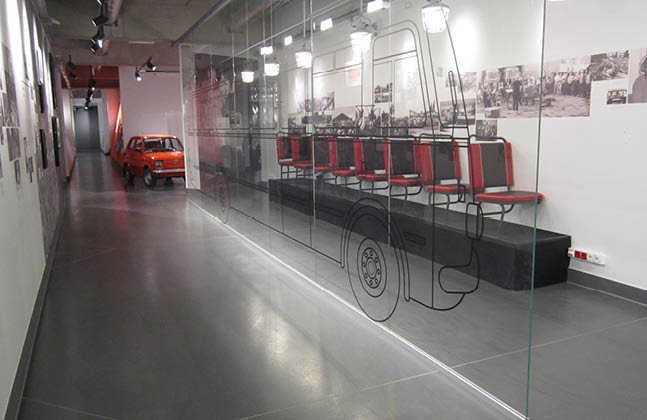
Glossy floor finishes can act as the ideal neutral backdrop
Glossy floor coatings in neutral shades can work wonders for helping to highlight exhibitions in museum spaces.
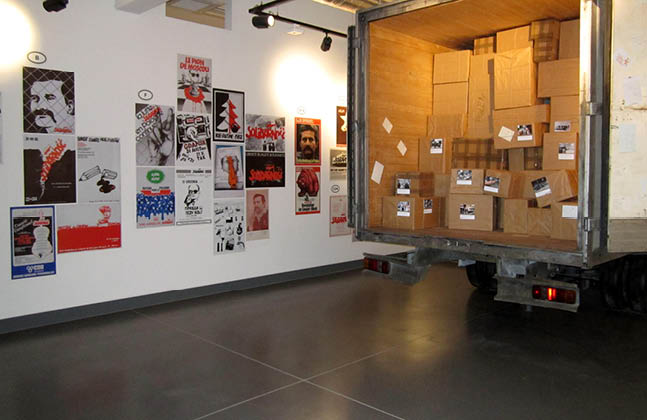
Durable resin flooring system also help to protect the substrate from heavy weights
A neutral colour that highlights the changing displays will act as a solid base for years. This solution was used, among others, at the Depot History Centre in Wrocław, Poland, where a floor incorporating a clear resin and coloured sand in grey was selected. With high durability and abrasion resistance, this style of flooring is often used in areas similar to this where high footfall is expected, and even in store rooms where exhibition pieces are stored.
In the Limelight
In contrast to being used as a neutral backdrop, more and more museum spaces are designed in a holistic way with floors being an important, and in many cases central, part of the exhibition itself.
In cases like this, the visitor’s sight can be directed at their feet, where the flooring is used as an attractive element and often a carrier of information. Such solutions are used in thematic museums in rooms with a permanent exhibition, where the arrangement remains unchanged for years. In the Museum of the Second World War in Gdańsk, Poland, self–smoothing resin flooring was applied, in a matte finish, with embedded posters and graphics depicting maps and literature from the 1940s.
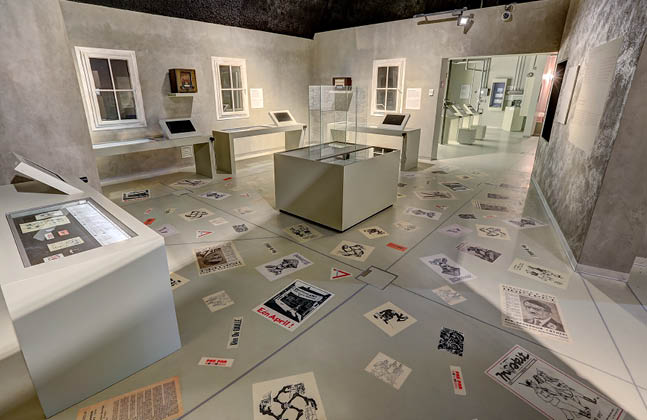
The flooring can be used as part of the exhibition
The First Impression
Museum entrance-ways have the important role of being both a welcoming space for visitors and encapsulating the content of the resident exhibition at the same time. With first impressions being so important, this space needs to entice visitors inside, whilst being adaptable enough to change depending on new features or exhibitions.
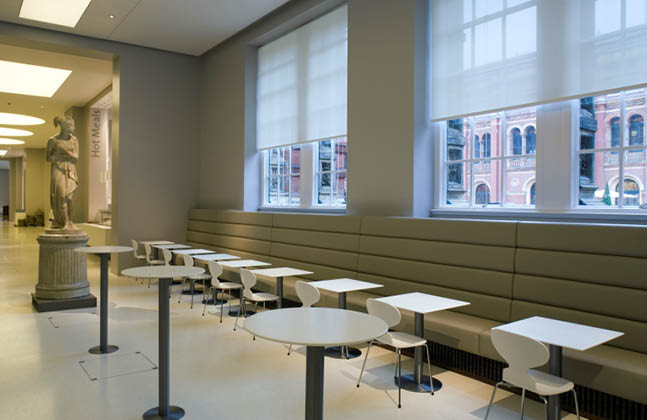
Clean, welcoming and decorative flooring can create a great first impression
Here, decorative flooring can work very well to add a touch of glamour to the interior. A high quality terrazzo flooring system can be ideal here thanks to the variety of colour options and mix of aggregates. The surface of terrazzo often has a subtle shine and resembles polished stone. Floors of this type can be found, among others in the London Victoria and Albert Museum. A similar effect was obtained at the Broad Art Museum at the University of Michigan, where a polished concrete floor was made using special aggregates.
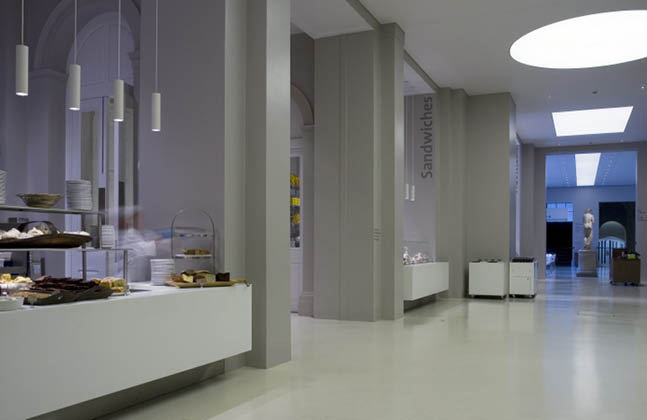
The London Victoria and Albert Museum
The choice of resin floors in museums largely depends on the desired visual effect as well as the suitability to the exhibitions and the anticipated use of the floor. If you would like any more information on suitable flooring solutions, please leave a comment below and we will get right back to you.





